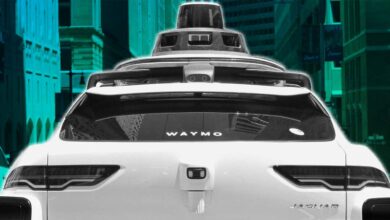The EV Revolution No One’s Talking About—And Why It’s At Risk

- The EV tax credit also included up to $40,000 for vehicles with a GVWR (Gross Vehicle Weight Rating) of 14,000 pounds or more.
- Fleets are said to average up to 10% of all new vehicle sales transactions.
- Blue Bird currently makes EV buses alongside its ICE ones.
It’s become pretty clear that the Big Beautiful Bill will be a devastating blow to the American march toward electrification and sustainable energy.
While some things, like domestic battery production, netted out okay in the end, it’s clear that the removal of tax credits and incentives to both build and purchase EVs will be a detriment to American industries. That’s especially true as the rest of the world is showing no signs of slowing down their switch to electrified vehicles.
While it’s no secret by now that the removal of the EV tax credits will affect new car shoppers, there’s one transportation sector that will fare even worse: commercial fleets. Think school buses, heavy trucks, delivery vehicles and more, all of which were gradually moving toward electrification with a lot less fanfare than the car companies get.
But this is still a critical area for mobility in general, and one with profound effects on emissions, public health and energy use on its own. And a recent conversation with Alexander Roinesdal, an energy analyst at the management firm Oliver Wyman, shed some insight on just how bad things could get.
Commercial EV adoption is low when it comes to fleet vehicles. About 14% of the fleets it surveyed operated an EV of some sort, according to a 2024 study from Cox Automotive. Yet, despite the low percentage, the study had much to say about the benefits of EV fleet vehicles.
It revealed that from the handful of fleets that did have EVs, the operators have been more satisfied with EV performance over combustion vehicles, even despite the elevated costs inherent to purchasing an EV.
The study said that within five years, most fleets expect to be operating an EV of some sort. Of course, purchase price and charging infrastructure concerns remain some of the biggest blockers for fleets, just like most passenger vehicle owners.
EV adoption among commercial fleets is still low, significantly lower than for passenger cars. But it has been growing, particularly in return-to-base type delivery vehicles. Typically in urban areas, where you basically know the mileage that the vehicle is going to drive in a given day and that it’s going to return to a base,” Roinesdal said.

from left: BrightDrop Zevo 600 and BrightDrop Zevo 400
Thus, within the past few years, more than a few manufacturers have risen to the occasion to meet the needs of fleet operators. The Rivian EDV, GM Brightdrop and Ram ProMaster EV are three of the purpose-built models meant to satiate big buyers like FedEx or Amazon. Then, there’s also big truck and bus models we generally don’t talk about here that have quietly raking it in.
School bus manufacturer Blue Bird has found success in its EV line. It got an $80 million grant from the Department of Energy to make the vehicles. In fact, Newsweek called Blue Bird the “strongest performing EV maker of 2024” because of its strong sales of its EVs.
Things don’t look so great for the future, though. When Trump’s bill passed, it took away the commercial EV tax credit. That includes up to $40,000 for vehicles with a Gross Vehicle Weight Rating (GVWR) of more than 14,000 lbs.
That’s a substantial benefit, especially since these big buses can easily cost upwards of $300,000. Without those tax credits, fleet operators—school districts, to go with the Blue Bird example—will be less willing to buy them, only hurting the U.S. EV adoption rate, Roinesdal said.
As big of a loss as this is for our environment, it may be hard to conceptualize, considering that most of us have no intention of buying a bus. But it can get worse, too. The smaller $7,500 tax credit for passenger cars, trucks and delivery vehicles is also a big help for rental car companies, too.

Roinesdal said that big fleet rental car purchases make up about 10% of all U.S. car transactions. Fewer fleet sales from rental companies means fewer EVs sold, but it also means fewer EVs exiting fleets and eventually making it to the used car market. It’s kind of bad all the way down.
On the plus side, Roinesdal did think that the level of new car lease specials from the existing tax credit may just buoy the used car market for a short while. But without any incentives, help, or reduction in cost to buy EVs, it’s inevitable that fleets will be less likely to purchase them.
That’s not great news for our environment, nor for the companies that have spent billions of dollars to build electric vehicles.
Contact the author: Kevin.Williams@InsideEVs.com
Source link


